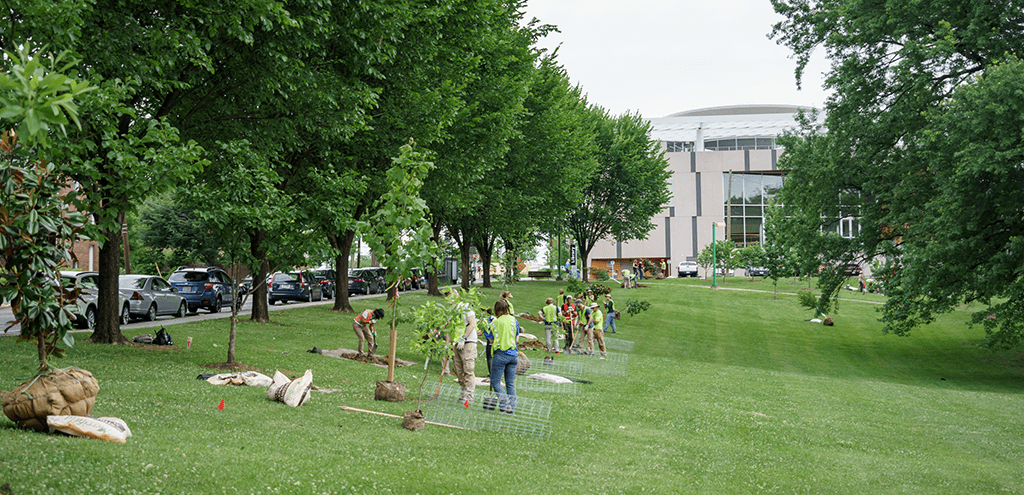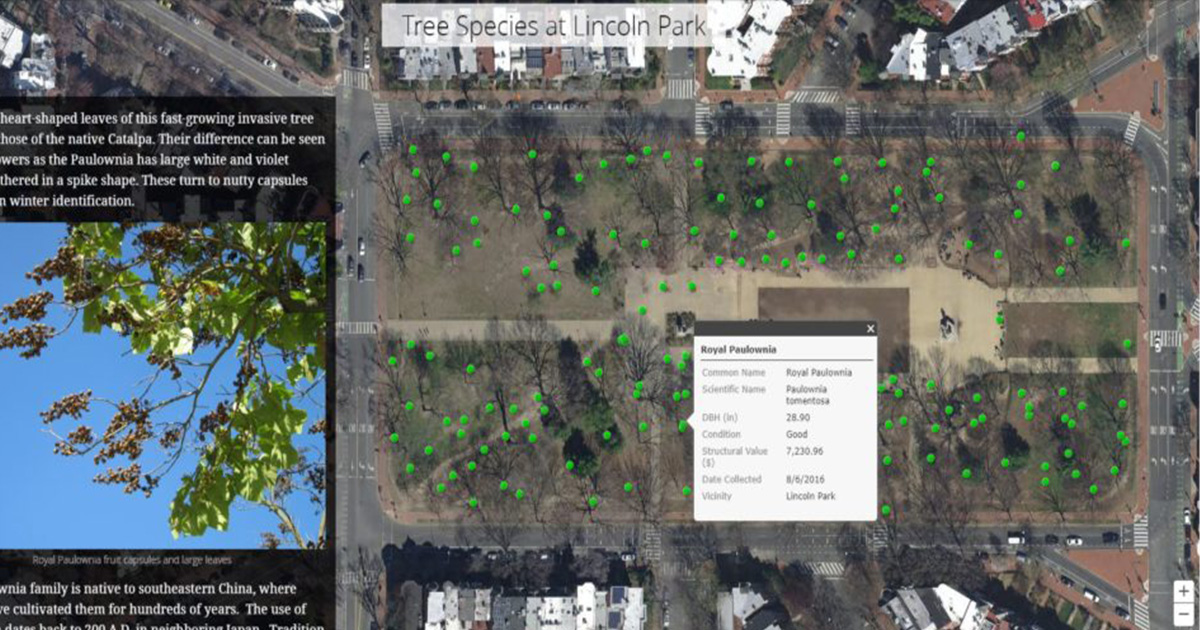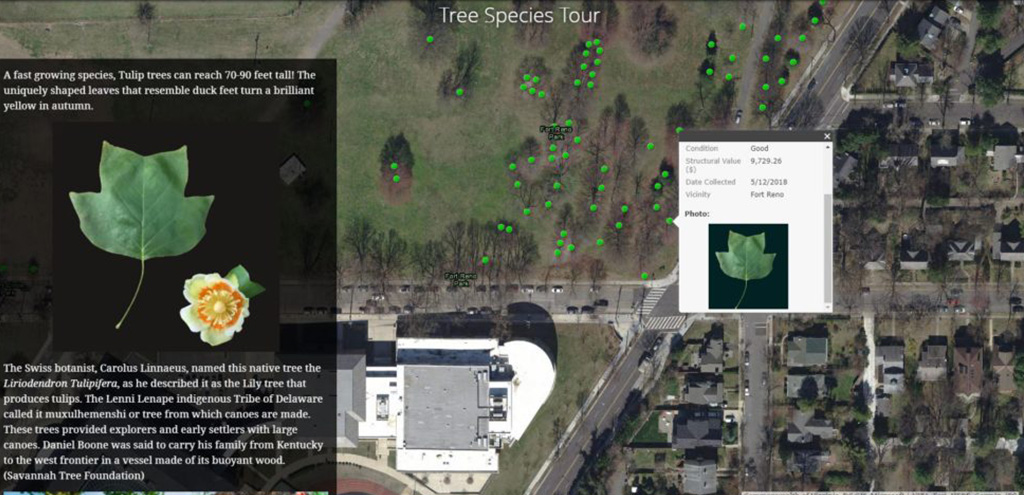
D.C. began stay-at-home lite, aka slowly but surely opening back up after weeks of sheltering in place thanks to the coronavirus pandemic. This means, among other things, that parks and greenspace throughout the city have re-opened for the people! Which is excellent news for people, these spaces, and their trees. We’ve been fortunate to work with the Department of Parks and Recreation (DPR) and the National Parks Service in numerous ways throughout the years: from the TreeWise summer youth program to the GZEP high school employment program and most recently, to Community Tree Plantings and Park Inventories! It’s fulfilling to directly contribute to the canopy where you really want it – your local park!
While inventorying trees with the Urban Forestry Division and updating our Tree Inventory Map we realized that as we discovered, identified, and measured the history of a particular park’s trees, we could also learn about the dynamic history of D.C.’s parks – enter our Park Storymaps:
 Named Lincoln Square in honor of the martyred President in 1867, this park was once home to Lincoln General Hospital, the largest military hospital for injured Union soldiers during the Civil War. Throughout the 1960s Lincoln Park served as the site of numerous civil rights rallies. Today, this park is a well-loved neighborhood amenity. It’s a destination for its memorial significance and often, as simply a flourishing open green space amidst the hustle and bustle of Capitol Hill.
Named Lincoln Square in honor of the martyred President in 1867, this park was once home to Lincoln General Hospital, the largest military hospital for injured Union soldiers during the Civil War. Throughout the 1960s Lincoln Park served as the site of numerous civil rights rallies. Today, this park is a well-loved neighborhood amenity. It’s a destination for its memorial significance and often, as simply a flourishing open green space amidst the hustle and bustle of Capitol Hill.
Banneker Recreation Center has a long history in the fabric of Washington’s African-American community. Serving as a haven for enlisted soldiers during World War II, a hub for black families during segregation, and the site of the nation’s first black pride festival, Banneker Recreation has been at the heart of many of D.C.’s social and political events. Today, it is one of the city’s most popular recreation centers and home to over 120 trees.
Logan Circle has been a landmark of the District’s culture since the city’s inception. Starting as a wild swath of land, the area was named Iowa Circle until 1891, when the location was selected for a memorial to General and Civil War hero John Logan. Logan was an Illinois senator-turned Union Army general who is credited with the founding of Memorial Day. An act of Congress in 1930 resulted in the official name change.
At the highest natural point in D.C., Fort Reno was once the largest Civil War fort defending Washington. Watching over River Road and Rockville Pike, its arsenal could rain down fire on Arlington and far into Bethesda. In the following centuries, this space transitioned from a neighborhood to a thriving green space with more than 150 trees!




